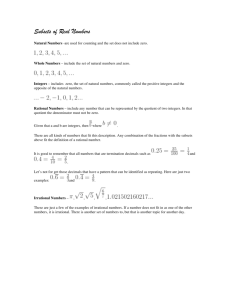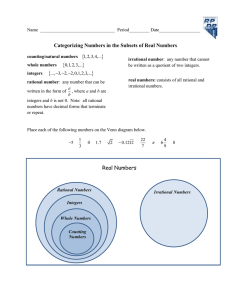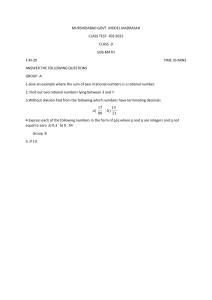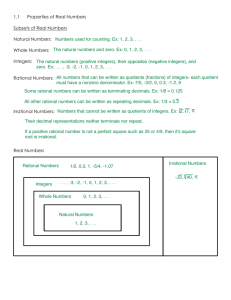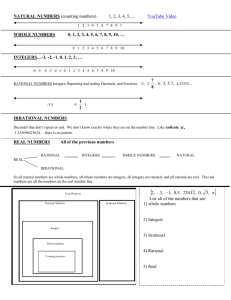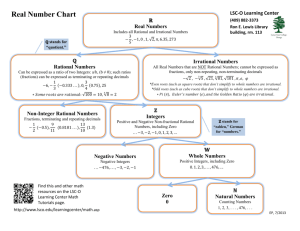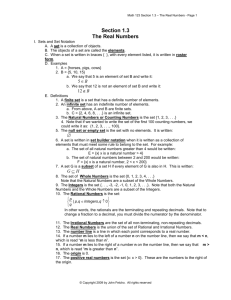The Real Number System Blank Notes
advertisement
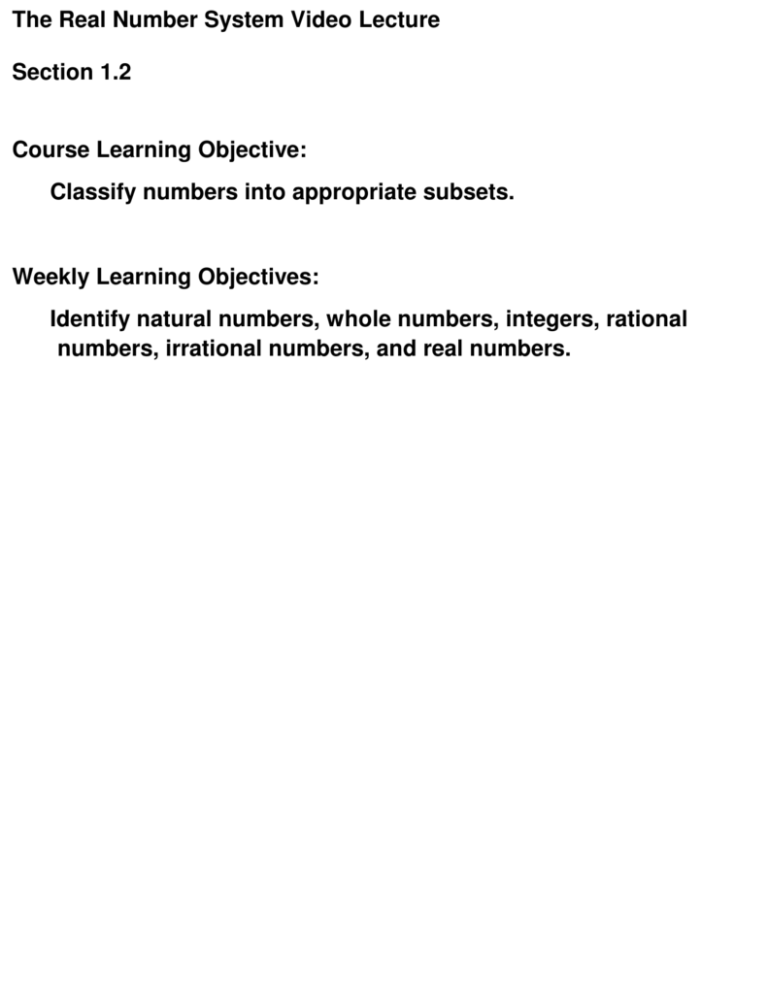
The Real Number System Video Lecture
Section 1.2
Course Learning Objective:
Classify numbers into appropriate subsets.
Weekly Learning Objectives:
Identify natural numbers, whole numbers, integers, rational
numbers, irrational numbers, and real numbers.
The Real Number System
Natural Numbers: {1, 2, 3, 4, 5, . . .}
Whole Numbers: {0, 1, 2, 3, 4, 5, . . . }
Integers: { . . . , -3, -2, -1, 0, 1, 2, 3, . . . }
Rational Numbers:
Formal Definition: Any number that can be written in the form p/q
where p and q are integers with q not equal
to zero.
Informal Definition: All decimals that terminate (end) or repeat.
Examples:
Irrational Numbers: All numbers that are not rational.
Informal Defintion: All decimals that do not terminate AND do not
repeat.
Examples:
Real Numbers: All rational and irrational numbers.
Limitations of Real Numbers: You can't take the square root of a negative number
(or the even root of any negative number).
In the Complex Number System, the imaginary number
negatives under the square root.
is defined to allow
So the Complex Number System includes more numbers than the Real Number
System because it includes complex numbers of the form
where a and b are real numbers.
Examples of Complex Numbers that are not real numbers:


